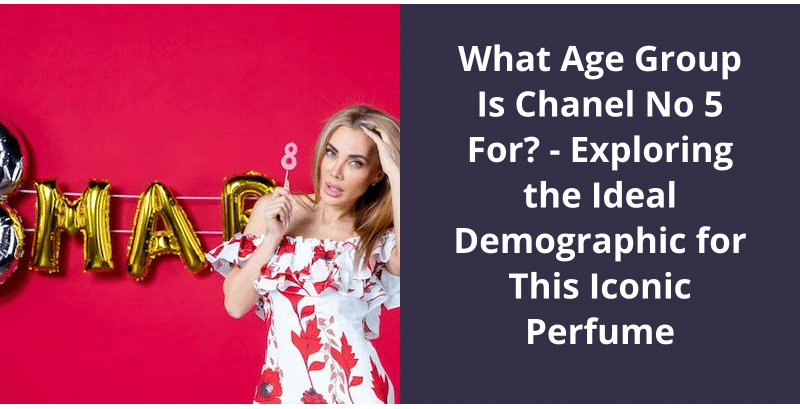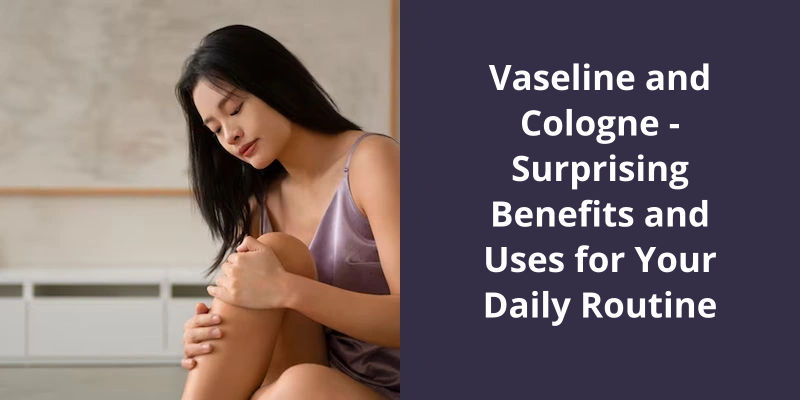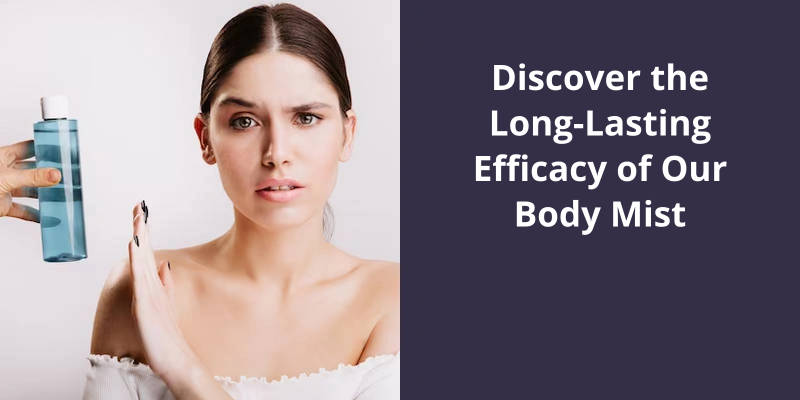Chanel No 5 is a timeless scent that appeals to a broad age range. It doesn’t have a specific age group it’s targeted towards. The classic and sophisticated notes make it a favorite among older women who appreciate its mature, iconic scent that has stood the test of time. At the same time, many younger women also enjoy its distinct and high-end aroma, especially those who prefer traditional over trendy fragrances. So, Chanel No 5, due to its universal appeal, is suitable for both young and older women, making it a versatile perfume enjoyed by many generations.

Who Is the Target Audience for Chanel Number 5?
This is because Chanel No5 is a luxury product that comes with a high price tag for it’s fragrance. It’s built for those who want to indulge themselves in luxury and sophistication. The brand has been around for a long time, and it’s one of the most popular and prestigious brands in the world.
It’s a symbol of luxury and style. It represents a lifestyle that’s elegant and sophisticated. Therefore, the target audience for Chanel No5 is women who want to embody these qualities. Women who wear Chanel No5 are confident, elegant, and self-assured. They’re women who know what they want and how to get it.
The brand has a reputation for using the best ingredients and creating fragrances that are unique and long-lasting. They want a fragrance that’s both luxurious and timeless.
They want to feel glamorous and sophisticated, like the celebrities who wear Chanel No5.
They know that a fragrance can make a lasting impression and have an impact on how they’re perceived by others. They want to be remembered for their elegance and sophistication.
These women are confident, self-assured, and appreciate quality and craftsmanship. They want to be associated with celebrities and high-profile individuals and understand the power of a fragrance.
The History and Evolution of Chanel No5 as a Brand and Fragrance.
- Chanel No5 was first launched by fashion designer Coco Chanel in 1921.
- The fragrance was created by French perfumer Ernest Beaux, who presented Chanel with several samples of scents numbered 1 through 5 and 20 through 24. Chanel chose the fifth sample, which became Chanel No5.
- Chanel No5’s iconic bottle design was inspired by a whiskey decanter and features minimalist, simple lines.
- The fragrance is composed of over 80 different ingredients, including jasmine, rose, ylang-ylang, and vanilla.
- Chanel No5 became popular in the 1950s, when Marilyn Monroe famously claimed that she wore nothing to bed but a few drops of the fragrance.
- The brand has since expanded to include a range of other fragrances and beauty products, but Chanel No5 remains one of the most recognized and beloved fragrances in the world.
It’s important for companies in the luxury industry to uphold certain standards, and Chanel is no exception. They’re known for seeking out individuals who can represent their brand in the best possible light. In order to maintain this reputation, they require their employees to meet specific qualifications, including a minimum age requirement of 18 years old. Furthermore, they seek out serious and experienced candidates for their retail positions. In this article, we will explore more about working at Chanel and what it takes to succeed in the luxury fashion industry.
How Old Do You Have to Be at Chanel?
Working at Chanel is a dream for many individuals interested in luxury retail. The company enjoys a world-renowned reputation for high-end fashion and beauty products. However, this exclusivity also means that Chanel seeks serious candidates who’re passionate about sales and have previous luxury retail experience. Due to the high level of competition, the company prefers candidates who’re at least 18 years old, and who possess impressive credentials in the retail sector.
The company is passionate about ensuring that it’s employees are happy and fulfilled in their work, and it offers a range of benefits and perks to support this. For example, employees receive ongoing training and mentoring to help them grow and develop their skills. They also have access to competitive salaries, health benefits, and employee discounts on Chanel products.
Now let’s move on to discussing the latest Chanel 13 series, which has been making waves in the fashion industry. With an emphasis on innovation and sustainability, this collection is sure to captivate fashion enthusiasts everywhere.
What Year Is Chanel 13 Series?
Chanel 13 isn’t a series or a product belonging to the Chanel brand. The Chanel brand is a luxury fashion house that was founded in 1909 by Coco Chanel. The brand is known for it’s iconic designs and products, such as the Chanel No. 5 perfume, the Chanel suit, and the quilted handbag with the interlocking CC logo.
Over the years, the Chanel brand has continued to innovate and produce new collections each season. These collections include a range of products, such as clothing, handbags, accessories, and cosmetics. Each collection has it’s own unique theme and style, while still remaining true to the classic Chanel aesthetic.
Chanel is also known for it’s partnerships with celebrities and influencers. The brand frequently works with high-profile individuals to promote it’s products and collaborate on new designs. Some of the notable collaborations include partnerships with Pharrell Williams, Kristen Stewart, and Lily-Rose Depp.
From it’s famous little black dress to it’s timeless tweed jackets, Chanel has created a legacy of timeless elegance and exceptional quality.
Source: Chanel’s Serial Codes – Bag Religion
The significance of Chanel No. 5 goes beyond just being a famous perfume. It represents Coco Chanel’s belief in the power of numbers and superstition, as well as her dedication to creating a luxurious and iconic brand. The scent has stood the test of time and remains an important part of fashion and beauty culture today.
What Does Chanel No. 5 Represent?
Chanel No. 5 is one of the most iconic perfumes in the world, and has been a classic of womens fragrances for over a century. The perfume was created in 1921 by legendary fashion designer Coco Chanel, who wanted a scent that would represent the modern, independent woman of the 1920s. It’s believed that Chanel chose the name No. 5 for her fragrance because she believed that the number five was a symbol of good luck and fortune.
This belief in the power of the number five was deeply ingrained in Chanels personal belief system. She was born on August 19th, the fifth day of the fifth month in the Chinese calendar, and she also had a deep appreciation for the numbers aesthetic qualities. In her fashion designs, Chanel often incorporated the number five into her pieces in various ways, such as using five buttons on a jacket or placing five pearls on a necklace.
When Chanel approached master perfumer Ernest Beaux to create Chanel No. 5, she gave him specific instructions on what she wanted the fragrance to represent. She wanted a scent that was fresh, modern, and unique – a departure from the heavy, floral perfumes that were popular at the time. Beaux used a combination of natural and synthetic ingredients to create a fragrance that was both luxurious and distinctive.
The fragrance has been worn by countless celebrities and style icons, and it’s distinctive bottle and packaging have become emblematic of the Chanel brand.
The History of the Iconic Chanel No. 5 Bottle Design
- The first Chanel No. 5 bottle was designed by Coco Chanel herself in 1921.
- The original bottle was simple and rectangular-shaped, inspired by the shape of whiskey decanters.
- In 1924, Chanel collaborated with the French glassmaker, Lalique, to create a more elegant and feminine bottle.
- The new bottle featured a faceted stopper in the shape of a diamond, which became known as the “jewel” of the bottle.
- In the 1950s, Chanel redesigned the bottle to be taller and more slender, with a smoother, more rounded stopper.
- This design is still in use today and is considered an iconic symbol of Chanel No. 5.
This information about the year of the Chanel Series 31 is important for those who wish to determine the age and authenticity of their Chanel bags. By understanding the serial number system, one can pinpoint the exact year of manufacture of their bag and also avoid purchasing counterfeit items. Now, let’s dive deeper into the history of Chanel and it’s iconic bags.
What Year Is Chanel Series 31?
Chanel is a luxury fashion brand that’s been around for over a century. One of the ways to identify the age of a Chanel bag is by looking at the serial number. This is especially useful when buying a pre-owned Chanel bag.
The way Chanel serial numbers are arranged isn’t entirely clear, as it’s believed that the numbers are randomly assigned. This intricacy makes it difficult for counterfeiters to replicate a Chanel serial number. This is one of the ways Chanel protects it’s brand and ensures that only authentic items are sold with their name on it.
How to Spot a Fake Chanel Bag
To identify a fake Chanel bag, look for details like the stitching, hardware, and logo. Authentic bags will have precise, even stitching and high-quality hardware with the Chanel name or logo engraved. Additionally, the Chanel logo should be symmetrical and centered, with no misspellings or variations. Finally, check the authenticity card and packaging for accuracy and quality.
Conclusion
While it initially gained popularity among mature women when it was first launched in 1921, it’s since become a beloved scent for individuals of all ages. From Hollywood icons to young professionals, Chanel No. 5 continues to captivate and inspire, embodying the brand's vision of classic sophistication and elegance. With it’s complex blend of floral, woody, and musky notes, this scent evokes a sense of timeless allure that resonates with people of all ages.





